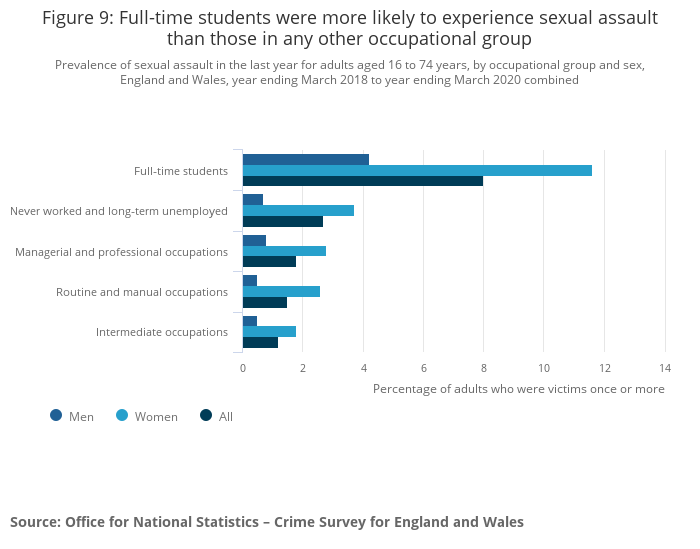Student sexual harassment and assault figures
Jim is an Associate Editor (SUs) at Wonkhe
Tags
On Monday I reviewed over a decade’s worth of efforts by student activists to get sexual misconduct on campus taken seriously, and what has often felt like the glacial pace of change in policy development and implementation in this area.
One of the things I’ve heard a lot over the years is that because surveys in this space tend to be self-selecting rather than population samples, many have refused to believe that there is a real problem.
It’s hardly as if that’s been accompanied by a rush to develop prevalence research to determine the true size and shape of the issue, but nevertheless there’s been a level of disbelief and denial about the problem’s scale.
So a couple of reports this week make for pretty disturbing reading. First, a report from UN Women UK on the prevalence and reporting of sexual harassment in UK public spaces found more than 80 per cent of women aged 18-34 had experienced some form of sexual harassment in a public space. That rises to 93 per cent for full time students.
Then yesterday’s release of the year ending March 2020 Crime Survey for England and Wales (CSEW) from the ONS brought further evidence. The CSEW covers the population living in households in England and Wales – but it doesn’t cover the population living in group residences (for example, care homes or student halls of residence) or other institutions.
Nevertheless full-time students were more likely to have experienced sexual assault in the last year than people in any other occupation type:

2.8 per cent of full time women students declared rape or assault by penetration (2.4 per cent for 20-24 year olds generally), 10.8 per cent of FT women students declared indecent exposure or unwanted sexual touching (9.4 per cent for 20-24 year olds generally) and 9.9 per cent declared unwanted sexual touching (8.7 per cent for 20-24 year olds generally).
Nationally, nearly a quarter of women have experienced sexual assault or attempted sexual assault since the age of 16, and one in 14 have experienced rape or attempted rape. Yet just 16 per cent of female adult victims and 19 per cent of male adult victims of rape reported it to the police.
Whatever we think we’re doing as a sector to prevent and tackle sexual misconduct and assault on campus, it’s not enough – unless you’re a true believer of the Spiked! lot, who (under the banner of “freedom of expression”) appear to believe that even on this issue, universities and their SUs are actually doing too much.


“The CSEW covers the population living in households in England and Wales; it does not cover the population living in group residences (for example, care homes or student halls of residence) or other institutions.” Quite a major caveat. Confining attention to rape or assault by penetration, most acts were committed by persons known to the survivor – typically friends or partners or family members (sometimes parents or guardians). For these reasons, rates among persons living in households are likely to be relatively high. The most relevant comparators would be between the 18-24 age group who are and are not in… Read more »